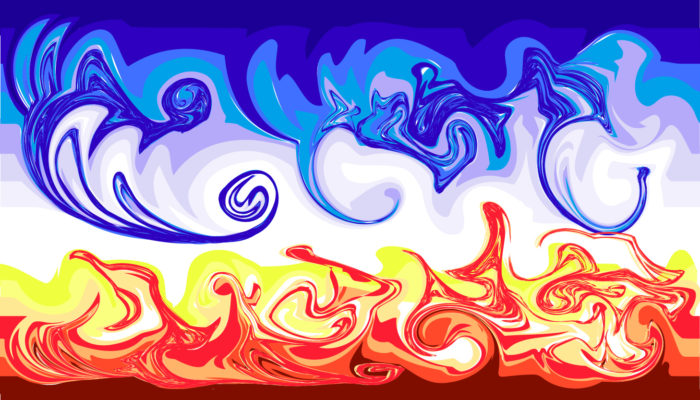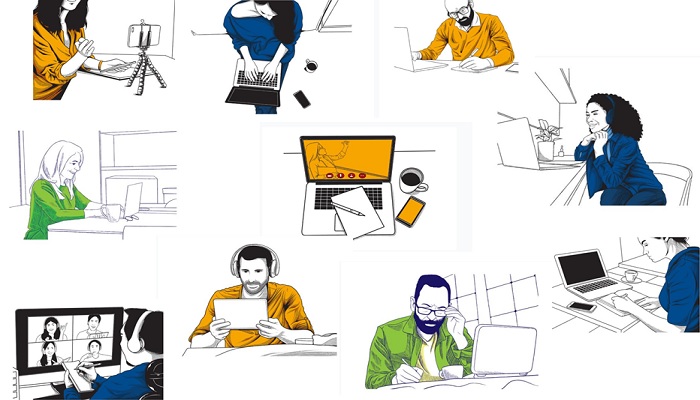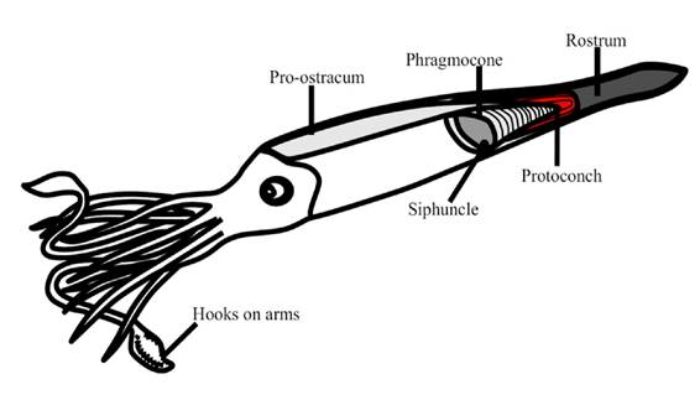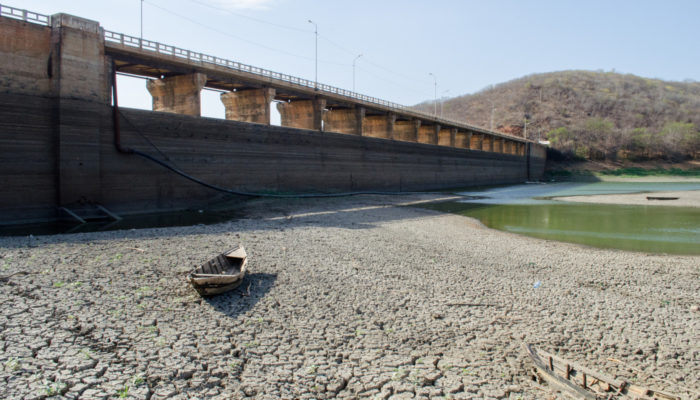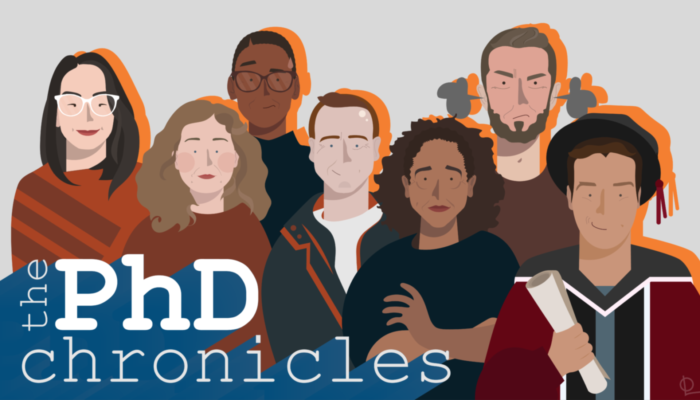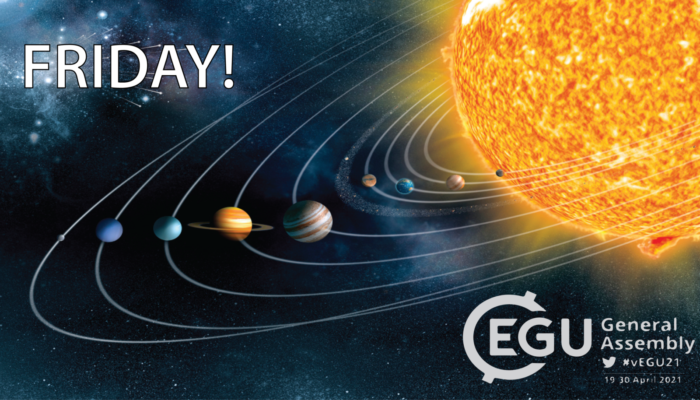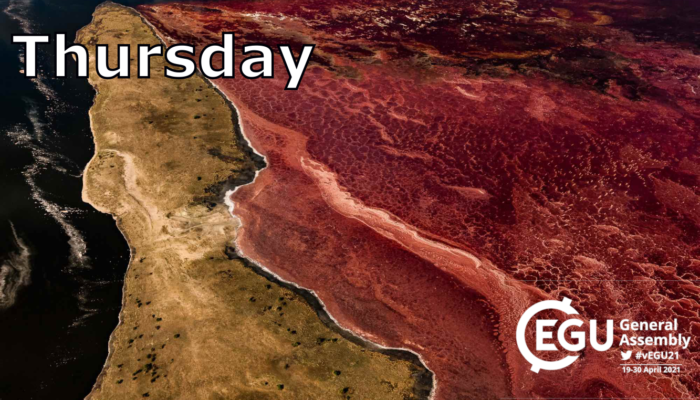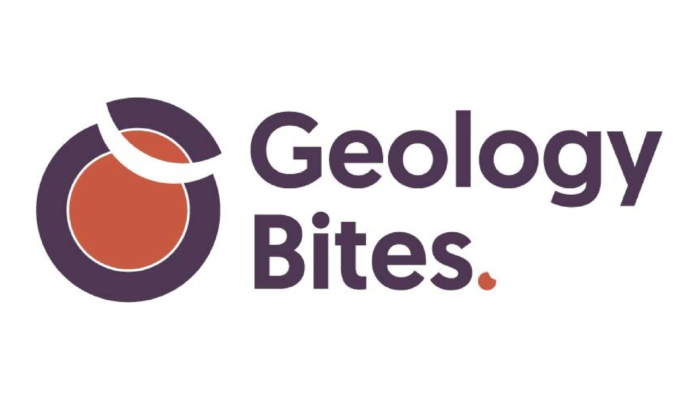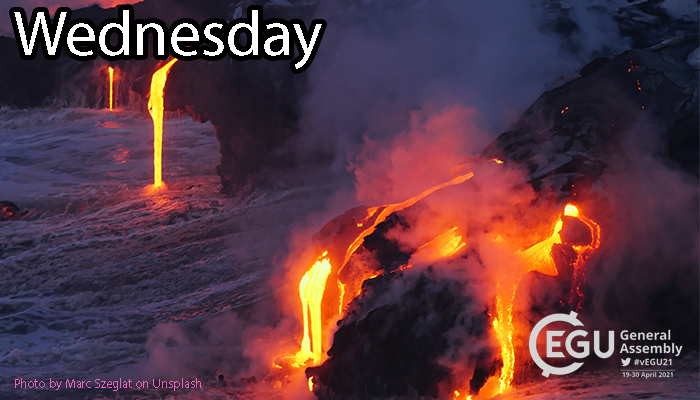Due to huge difference between the time scale of the mantle convection and the outer core convection, they are modelled separately. In this week’s News and Views, Masaki Yoshida from the Volcanoes and Earth’s Interior Research Center, Japan Agency for Marine-Earth Science and Technology (JAMSTEC), Japan, put forward the recent development on the modeling of the whole solid-Earth. The E ...[Read More]
Hydrological Sciences
Post #vEGU21 hydrological reflections
#vEGU21 is over and it was an intense two-week period for many of us. Whether you occasionally zapped in or kept your whole last week free to join online, you certainly have heard a lot about it. Here I have collected a few reflections from the events related to the hydrological sciences division. The conference first week The first week presented several Union-wide debates and sessions. We learne ...[Read More]
Stratigraphy, Sedimentology and Palaeontology
Belemnites in Mythology: From Thunderstorms to Fertility Symbols.
Belemnites are a group of now extinct marine coleoids cephalopods that lived during the Mesozoic (240 Mya – 65 Mya). Unlike modern squids, belemnites had a hard internal skeleon made of calcium carbonate called a rostrum. Like many fossil groups, belemnites have been associated with numerous myths and legends in folklore. Belemnites take their name from the Greek word belemnon meaning dart or jave ...[Read More]
Natural Hazards
Diagnosing drought in northeast Brazil
Worldwide, drought has put lives and livelihoods under serious threat. People are increasingly suffering from drought, but we often also aggravate drought ourselves. Fortunately, solutions to drought problems are mainly in our own hands as well. Drought is not just a water problem. It is a societal problem. Droughts: a local problem with global relevance In recent years, droughts seem to be ...[Read More]
Geodynamics
The short story of my PhD
PhD students’ struggles are alike; each succeed in their own way[1] It was a Friday morning, and nearly 3 years had passed since I arrived at Sydney. This meant, I only had one month left to submit my thesis! No sooner had I entered my office than a feeling of anxiety had found me. I had no time to dig deep into my own thoughts to discover what was happening, although it was obvious. Instead, I re ...[Read More]
Geodynamics
The Sassy Scientist – A Digital Didgeridoo: Part 2
After a year of being glued to screens, Matej can sadly only keep up with one tab at a time and asks with intense FOMO: What have I missed from vEGU 2021? Dear Matej, Oh, dear! This week has been truly intense, and I do not blame your Internet bandwidth for not keeping up with all the parallel discussions and science from vEGU. In fact, it turns out that on Monday the conference platform was taken ...[Read More]
Geochemistry, Mineralogy, Petrology & Volcanology
vEGU21: Friday highlights
vEGU21 is slowly coming to an end! We are looking back to a week full of interesting science and an extraordinary Monday which will surely go into EGU history (a great thank you again to all the conveners and organizers who tried to make the best out of the situation, you did a great job 👏). Even though it’s the last conference day and everyone is slowly getting exhausted there are some great sess ...[Read More]
Geochemistry, Mineralogy, Petrology & Volcanology
vEGU21: Thursday highlights
It’s Thursday, and vEGU Week 2 is almost gone. But we are here, again, to make things easier for you! So, suggestions for the day: let’s start at 11.45 CEST by knowing more about “Volcano-glacier interactions: Arctic, Antarctic, and globally”, session GMPV9.4 (does Eyjafjallajökull sound familiar?). Here, Lamb et al. will introduce us to icequakes on Chilean volcanoes with the vPICO “Discriminatin ...[Read More]
Geodynamics
Geology bites: In conversation with researchers
We are still in a lockdown and we can still use some entertainment for when we stare at the same four walls for hours on end or go on our daily walk. Fear not, dear reader, I have got just the thing for you in these troubling times: the new podcast Geology Bites hosted by Oliver Strimpel: www.geologybites.com. Don’t fret about the name, there’s plenty of geodynamics content as well. In ...[Read More]
Geochemistry, Mineralogy, Petrology & Volcanology
vEGU21: Wednesday highlights
Ready for another day of science? Make sure you’ve filled up on snacks and sugar, because a new exciting day of volcanoes, geochemistry, petrography, and mineralogy awaits you. Get a full load of energy because the morning starts explosively (09:00-10:30 – CEST) with Magma ascent, degassing and eruptive dynamics, in GMPV9.6. (link) Where you can understand more about eruptive processes walki ...[Read More]

